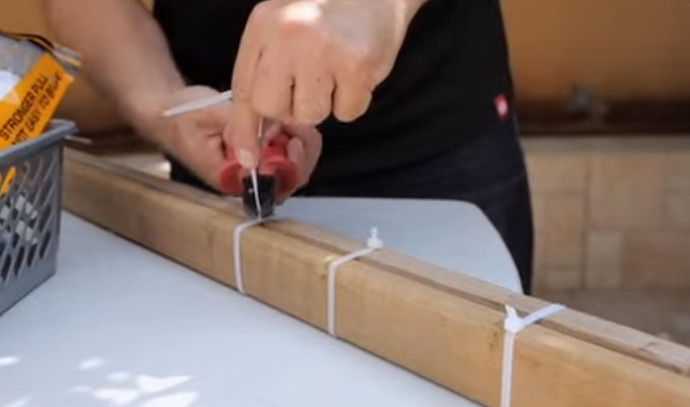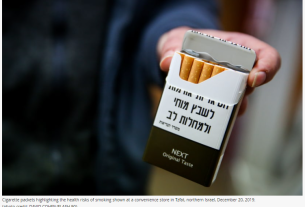Sitting and eating while communing with nature and hearing the chirping of birds is relaxing, but building the temporary structure can be dangerous – including falling off a ladder, getting hit by a hammer, electrocution, and fires during the Sukkot celebration.
The Jewish holiday of Sukkot reminds us of the booths in which the Israelites dwelled during their exodus from Egypt. It also reminds us that the booth is constructed according to defined religious rules. The tradition that begins immediately after Yom Kippur provides a family-oriented and festive experience, accompanied by the mitzvah of dwelling in the sukkah.
Sukkot is a holiday that reminds us of the booths in which the Israelites dwelled during their exodus from Egypt. It also reminds us that the sukkah is constructed according to defined religious rules. The tradition of building the sukkah, which begins immediately after Yom Kippur, provides a family-oriented and festive experience, accompanied, of course, by the mitzvah of dwelling in the sukkah.
Safety tips for putting up a sukkah
But every year, hospital emergency rooms admit many patients who have been injured, burnt, or otherwise hurt when preparing or using their booths. The Israel Institute for Safety and Hygiene (IIOSH) in the National Insurance Institute gives safety tips for preparing for the festival that begins on Friday night:
Choose the right-sized hammer for the job. Pay attention to the striking surface’s diameter and ensure it matches the dimensions of the nails.
Inspect the hammer handle to make sure it’s not damaged or broken and ensure the hammerhead is securely attached to the handle. Strike the hammer when the striking surface is parallel to the surface being struck, and avoid glancing blows with the hammer. Additionally, hold the hammer at the lower end of the grip and look at the object you’re hitting. Hold the hammer so that the root of your hand is in a natural position (straight), and the palm tightly grips the handle. Use the hammer in such a way that the root of your hand is in a natural position (straight), and the palm firmly grips the handle.
When dealing with screws in inconvenient and hard-to-reach places, use screwdrivers with extensions to secure the screws. Operate the screwdriver only after you’ve properly inserted the tip of the screwdriver into the screw’s groove.
Do not push the screwdriver into the screw with excessive force beyond what is needed to maintain stable contact with the screw. A properly inserted screw will be securely fastened during the screwing process. Hold the screwdriver with its shaft positioned vertically to the screw head. Do not grip the screwdriver handle in pliers to exert additional rotational force; you can use a wrench when the screwdriver’s handle is designed for this purpose. Do not carry screwdrivers in your pockets.
Use the saw appropriate for the task at hand (a metal saw is not suitable for cutting wood, and vice versa). Choose a saw handle that allows the root of your hand to be in a natural (horizontal) position. Check the material you intend to cut to locate nails, protrusions, or other hard objects that could cause damage or blade deflection. Place your free hand near the saw’s marking as the root of the hand rests on and is pressed toward the blade. Start cutting carefully and slowly. Pull the blade upwards until it begins to bite into the material. Start with partial cuts, and only then position the saw at the correct angle.
The installation of electrical systems and wiring for lighting or any other purpose should be carried out only by a certified electrician. Incorrect installation or use of system components can endanger the occupants of the sukkah and may lead to electrocution. Light bulbs and electrical devices generate heat at different levels that can be especially dangerous in a sukkah with walls and a roof that are not heat-resistant and may catch fire, so make sure to keep sources of heat such as heaters away from flammable materials like sukkah walls and decorative coverings. The IIOSH recommends using cool LED lighting in the sukkah as these are not only more energy-efficient but also generate much less heat than other bulbs. In case of drizzle or rain, disconnect the power source from the electrical system. In event of electrocution, don’t touch the victim until you have disconnected the power source or used an insulated object like wood to separate him from the power source.
During the assembly and disassembly or the hanging of decorations, use a suitable and stable ladder or a suitable scaffolding surface. Don’t climb on chairs and other unstable objects to avoid falling. At least two people should build a sukkah, with one assisting and helping the other and ensuring safety.
If the sukkah is erected on a house balcony, make sure that the sukkah window, if it exists in the wall, is securely fastened. During the stay in the sukkah, children should not place a chair and climb on it next to the window. Do not bring stoves, gas heaters, or ovens into the sukkah, which is made of flammable materials that can easily catch fire.
Temporary sukkah booths that are suspended in the air for the holiday and were not approved by engineers are absolutely forbidden; municipality inspectors are on the prowl to find them and dismantle them before the holiday.



